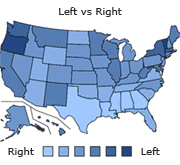Dumb or smart quiz
Problems With the Navy • Consisted of Gunboats going down the rivers and saltwater ironclads • The vessels were more complex than wooden warships and technology was first generation • Navy had no long-term experience • For wooden ships only one or two could be built at a time • Coastal shipyards could not handle the building of all those ships • Solutions of problems led to two major departures from traditional Navy • There was a new branch within the Navy Department administration which made a special status on the ships • The technical needs of the program required a higher level of industry than any previous effort What Shaped the Navy • Ships were ironclad clearly offensive weapons • Economic resources, industrial resources, political ideas, and strategic shaped Civil War navies • Program benefited from leadership of dedicated naval officers • Expansion of industrial bases did not become permanent after the war • Ironclad program did not economically benefit the participating shipyards • Naval administrative regression destroyed the independent acquisition system
What Scott did • Winfield Scott, the Union's general-in-chief, proposed what became known as the "Anaconda Plan." • Scott saw that the Confederacy had the support of its people • He also realized that the war would be up to three years for ultimate Union victory. • Because of the impatience of the North, he called for a naval blockade to surround or “strangle†the Confederacy • Meanwhile a Union army of about 80,000 men in the West reclaimed the Mississippi River. • The Union army in April 1861 consisted of only 15,000 men • Implementing Scott's plan would have a delay to build up the army and prepare for major offensives. Other ideas • The Northern public and the political leadership in Washington, DC were not willing to be patient • The New York Tribune began calling for an immediate attack on Richmond, Virginia, the capital of the Confederacy. • The Tribune placed "On to Richmond!" on the first page of each edition • That title eventually contributed to President Lincoln's decision to have the Union army attack Confederate forces in the vicinity of Bull Run (Manassas) in Virginia. • A Confederate counterattack shocked the Union troops, many of which broke and went back to Washington, DC. The Attack • William Tecumseh Sherman understood that an invasion of the Confederacy would require a well-trained army and excellent leadership. • It was not until 1864 that the Union army was able to launch a coordinated attack against the Confederacy • The troops were experienced and could withstand both the rigors of a long and difficult campaign as well as counterattacks and temporary setbacks.

